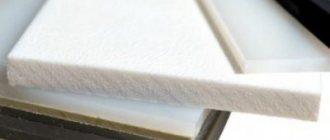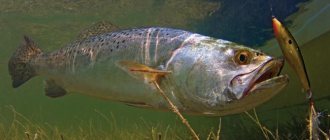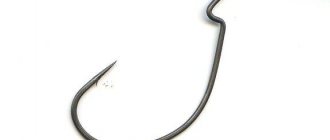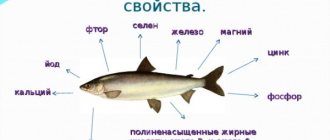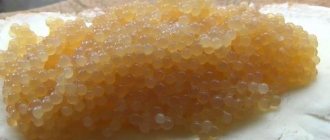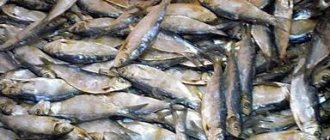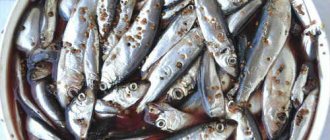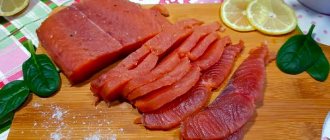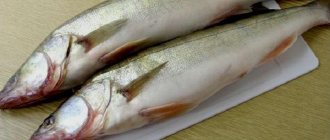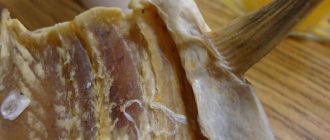Winter fishing is impossible without drilling holes in the ice. For this process there is a special tool called an ice drill, and its main component is knives. Different types of cutting blades are used depending on weather conditions and the condition of the ice edge of the pond. In this article, we will figure out how to sharpen ice drill knives using simple tools that every fisherman has at home.
Differences between domestic and foreign knives
The knives for ice drills on the market can be divided into domestic ones and those produced abroad. Blades that are manufactured outside the CIS have the following positive aspects:
- low cost;
- versatility - a knife from any manufacturer in most cases will fit any domestically made ice drill;
- subject to self-sharpening at home.
Disadvantages often include the low quality of the materials used, low efficiency and rapid dulling.
In turn, foreign blades are distinguished by increased strength of materials, excellent drilling results and a long period of operation without additional sharpening. Among the disadvantages are the high cost and the almost complete impossibility of self-sharpening.
|
The question of how to sharpen knives on an ice drill arises only for domestically produced products. If such an idea has come to you regarding a product on the foreign market, it is better not to waste your energy, but to save up money for new blades, since sharpening it is a complex technological process that requires maintaining the correct angles on different sections of the knife.
We sharpen ice drill knives
V. Sokolov
Judging by the noticeable decrease in the activity of Internet discussions about the choice of brand and type of ice drill, most fishermen have already made a choice, and, perhaps, have already become the proud owners of domestic or imported ice drilling units. But along with the purchase of a much-needed tool for winter fishing, they also acquired a small “headache.” And the magnitude of this “pain” is inversely proportional to the skills in using a sharpening tool: the fewer skills, the stronger the “pain”, alas...
First, I want to remind you of a simple truth: there are no miracles in the world. And I attribute this primarily to the work of foreign ice augers: although beautiful, elegant and ergonomic, an imported device does not always, unfortunately, meet the expectations of those who first purchased it. And the results of numerous tests allow us to state quite definitely that any “foreigner” loses to a SPECIALLY TRAINED
to a domestic product of a similar purpose both in terms of speed and the number of required revolutions. And the “foreigner” has only one benefit - the overall load on the fisherman is less due to the more uniform work of both hands.
A little theory
But what is “specially trained”? Without going particularly into the theory of processing materials by cutting (this is the process we carry out when drilling holes in ice), we can say that the main role in ice drilling is played by the set of angles - sharpening and installation - of the ice drill knives. By varying the magnitude of these angles, we can obtain different properties of the tool, depending on the physical state of the ice. And this is largely typical for domestic ice drills.
In imported models, the cutting edge of the knife has a complex curved shape, and the angle of attack on such knives (or on the cutting head - the Finnish version) that varies along the length of the blade allows them to work almost equally in both soft (at a temperature of about 0 ° C) and on hard ice (when the air temperature reaches minus 20 - 25°C and below), i.e. Depending on the hardness of the ice, different areas of such blades work most effectively.
True, manufacturers of imported ice drills provide for slight adjustment of the position of the blades on the tool - the holes on the platform have a larger diameter than the screw securing the blade. And depending on the hardness of the ice, it is possible, by changing the angles of the blade on the platform, to regulate the speed of cutting the ice within small limits. But all the same, it turns out that initially such a device was conceived as universal - for any ice.
If we analyze the work of our ice drills, it turns out that they are optimal only in a small temperature range. Considering that the softest ice is at 0°C, we can say that domestic designs with a flat blade are designed for such viscous ice. When comparing a domestic ice drill in these ice conditions with a foreign car having similar parameters, it turns out that ours is ahead. Moreover, with a clear advantage - both in terms of the time it takes to “climb” the hole, and in the number of required revolutions. But it loses in the softness of movement when drilling, and this is especially noticeable in the last, spring, ice that has already been washed away from below - in the almost complete absence of biting when entering the water.
Now let's continue the comparison under conditions of decreasing air temperature. “Our” ice drill will gradually lose its advantages. And in the region of minus 8 - 12°C, the competition in the speed of penetration will end with almost the same results. But at the same time, the advantages of a foreign car (more comfortable to drill) will remain. If you continue testing with a further decrease in temperature, then the lag of flat knives will increase. But you should not see only a negative aspect in this test. And if a domestic ice auger is specially prepared for each fishing trip (on the issue of angles) - depending on the condition of the ice on the reservoir - then the “Scandinavians” will not be able to catch up with it.
Ice auger selection criteria
Now that we’ve sorted out the design ideas, let’s consider what criteria should be used to select an ice drill.
The first criterion is the fish you plan to catch. If a drill is selected for smelt or, say, rotan in park ponds, it makes sense to choose it with a minimum cutting block diameter. Domestic manufacturers produce drills with a minimum size of 100 mm, while Scandinavians produce drills with a minimum size of 70 mm on certain models. If you plan to catch bream or pike, it makes sense to take 150 - 180 mm or more.
Among domestic products for this task, there are quite worthy offers from Barnaul manufacturers. The Scandinavians also have several models with the same parameters. The most common - and universal for most fishermen - are ice drills with the ability to drill holes with a diameter of 120-130 mm.
The second criterion is the thickness of the ice. You need to know its maximum value for your region. For example, in Ladoga and the Gulf of Finland this value in rare years exceeds 95 - 100 cm - and all domestic and most imported ice screws are quite suitable for our ice. If the average ice thickness exceeds a meter, the domestic manufacturer has a special option for either an extension extension or ice drill elements of increased length. Telescopic extensions have already appeared. For imported manufacturers, such transformations of ice screws are initially built into the design.
Well, an important criterion is the price of the product. Foreign cars are more expensive than our steel structures, but, in turn, the domestic “titanium” is priced noticeably higher than the most “sophisticated” foreign cars. And it’s no secret that thanks to the significantly lower weight and almost unlimited service life of the most advanced titanium models, they ultimately occupy leading positions in the arsenals of winter fishermen.
But still, the most important criterion for the quality of work of any ice drill is the knives. The fisherman’s opinion about the product as a whole depends on the quality of their manufacture and sharpening - whether the drill drills or not.
What affects the quality of drilling?
The quality of drilling depends on a number of factors. What are they and how do they affect the operation of the ice drill? Let's start with domestic products. With the exception of Barnaul, all manufacturers use approximately the same type of blades - as a rule, purchasing them separately: such blades are already installed on the finished product. I must note with regret that at these enterprises the incoming control does not always work reliably, which should cut off low-quality products even before they are put on the ice drill. What do I mean by low-quality products?
1. Insufficiently hardened blades.
Once upon a time, in ancient times, there was a standard (GOST) that determined the hardness of this product to be no worse than 54 - 56 units on the HRC scale (Rockwell hardness scale). Now the range of values can be from 30 to 58 units. It is clear that at the lower limit the blades are good for nothing - they are just raw structural steel that will “shrink” after the first 2-3 holes even in clean, sand-free ice.
The upper limit of 57 - 58 units is also not always a super offer: not all steels used for knives can be hardened to these values with impunity - overheating is possible.
And then such a blade will simply crack in the cold at the first turns of the ice drill. Is it possible to eliminate deliberate defects at the purchase stage? Partially yes. To do this, you need to take a file or needle file with you to the store and try to process the blade a little.
Naturally - not the cutting edge, but the non-working part. The file should slide, leaving virtually no marks. It will noticeably saw through raw steel. But overwork cannot be determined so easily - only by crumbling of the cutting edge and other major damage, alas.
It is also necessary to carefully examine the cutting edge for the presence of so-called “discolorations” resulting from a violation of the thermal regime during machine sharpening of blades.
2. Failure to maintain the correct blade shape.
The blade must have TWO cutting edges! Only in this case, and provided that it is well sharpened, will the drill grab ice immediately after installation, literally with the slightest turn of the handle. The presence of one edge on the blade will not allow it to reliably cut into the ice - and the drill, describing a complex trajectory, will tend to “run to the side” rather than drill a hole.
3. Dull blades.
If the test with a file left no doubt about the hardness of the steel, both cutting edges are in place and there are no “tarnished colors” on them - this is an easily correctable situation. The sharpening quality test is very simple: take the blade in one hand and a sheet of newsprint in the other (photo 1). When moving mutually, the blade should cut the paper under its own weight. If it cuts, everything is fine, you can go fishing with such blades. If not, sharpening is necessary.
Selecting spare blades
More on sharpening options below, but for now here’s a short digression. When buying a domestic ice screw, it is advisable, in my opinion, to immediately buy a spare set of blades, or maybe a pair. And so that on the ice you don’t feel offended by a hasty purchase, it makes sense, firstly, to check the conformity of the shape of these blades by folding them. And, secondly, look carefully to see if the mounting holes for fasteners on the ice drill platform and on the additional blades match.
A fairly large selection of blades of various shapes has appeared on store shelves, which in itself is not bad. In addition, the price tags of some samples indicate steel grades (though they mean absolutely nothing to the vast majority of fishermen).
Let's try to figure out which form to choose. Designers vying with each other to prove that their knife shape and cutting edge are the best. Practice shows that well and correctly sharpened blades of different shapes on the same ice drill under the same conditions show approximately the same results. Then the only selection criterion will be the convenience (!) of self-sharpening.
Knife material
Now a few words about the material, and is it sometimes worth paying a lot of money for a not entirely clear combination of letters and numbers of markings? In practice - no, it is not necessary, with the exception of two versions.
Knives made of P18 steel (this is one of the most common grades of steel, classified as high-speed tool steel). Analogs - P9, P12, P6M5K5. Such blades appeared on store shelves last year, but when purchasing, you need to pay attention to the shape of the knife, the quality of its sharpening, the absence of “tarnish” and hardness.
Unfortunately, not all samples presented on the shelves will have the declared hardness - from 62 to 72 units. Let me explain what it is. If the hardness is really 72 HRC units, then such a blade will make scratches on files. And if during operation such a blade is not, through the negligence of a fisherman, planted in a stone at the bottom, then it will drill through clean ice without problems for decades. It will also withstand several dozen fishing trips on ice with good sand without any problems. This is truly a godsend for the fisherman.
A value of 62 units - this, by the way, is the standard for knives of Swedish ice drills - is also good. But, of course, such a blade cannot be called eternal, although it is still better than the vast majority of domestic models. A file on metal of this hardness leaves no marks.
But an unpleasant surprise is quite possible when a file on a P18 blade leaves clear marks. This means that the hardness of the knife is clearly less than 55 units - the material is not hardened.
Trying to correct such a defect yourself is useless; the production cycle is too complex; you cannot do without competent specialists and a good thermal section. The price of blades can exceed 300 rubles, so before parting with such an amount, check whether you are really paying for the “thing”.
2. Knives with a wear-resistant coating of the cutting edge with titanium nitride. It’s difficult to say (the prototype was bought and taken from me literally from under my nose) whether there was a series of similar products. But judging by metal-cutting tools with a similar coating, these are also eternal blades, even on ice and sand. For reference, a titanium nitride coated drill bit fits freely through the file. Hardness - more than 75 HRC units, very high wear resistance.
What, with what and how will we sharpen?
These two options, if you happen to purchase them, cannot be sharpened. We will sharpen everything else. Let me make a reservation that we will immediately reject the option of taking the knives to a specialist sharpener for machining. We will do everything with our own hands.
To work, we need to purchase a block of abrasive material with wide flat surfaces. In building supply stores it is sometimes called “correct stone” (photo 2). The material of the bar is familiar to all spinning anglers - SiC (silicon carbide), in metalworking industries it is carborundum.
When purchasing, you need to make sure that there are no noticeable gouges or large chips on the edges on the flat surfaces. Not all abrasive stones on the shelves lately carry the necessary markings on the grain size. For sharpening, you need to choose stones with medium or even fine grain, which are similar to sandpaper marked H4 - H6.
What should you consider when working with abrasive stones? Their actual service life is 10-15 sharpenings of blade sets. Further, developments begin to appear on the stone - and it loses its flatness. It is no longer possible to sharpen a knife normally with such an abrasive. Therefore, you should not save - the usual cost of a bar is in the range of 10-25 rubles.
What types of knives are there on an ice drill?
The following types of knives are distinguished:
- Spherical. They are highly efficient and suitable for any ice: loose, dense, dry and wet. The only drawback is the impossibility of self-sharpening. It will not be possible to achieve the correct angle with this shape without the appropriate technique. When such blades lose their ability to cut ice normally, they must be replaced with new ones. The cost can reach a third of the entire price of an ice drill.
- Flat. A universal type of knives, which is also suitable for drilling any type of ice. Although in this case you will have to put in more effort than when using spherical blades. Flat knives are used in most domestically produced ice drills and are interchangeable. Sharpening them is not a problem at home, which is why they are widely used among fishermen.
- Stepped. The blade is divided into two parts, one protrudes slightly forward. During the drilling process, the knife crushes the ice rather than cutting it, and does not require much effort. Used in severe frosts down to -20 degrees. Sharpening such knives on an ice drill is possible, but not as easy as with flat ones.
- Serrated. Suitable for wet ice, the blade is divided into teeth. Currently not widely used. It is very difficult to sharpen on your own.
When going fishing, you need to take into account that flat knives are suitable for dry, homogeneous ice in moderate frost. When the temperature reaches -15, -20 degrees, it is better to use stepped blades, and at the end of the winter period, use spherical and serrated ones.
Beginners can use flat blades all the time, but professionals should carry the entire set with them. Then, upon arriving at the site, you will be able to assess the condition of the ice and make a replacement.
This will significantly reduce the time for drilling holes.
Types of knives and sharpening features
Modern fishermen have various modifications of ice drills in their arsenal, designed for use in various conditions - during thaws and frosts, on loose and hard ice. Their main difference from each other is the design of the blades, which have different cutting edge shapes. Depending on this feature, knives are divided into the following classes:
- straight, they are flat;
- stepped;
- toothed;
- semicircular or spherical shape.
Accordingly, different types of ice drill knives will have different sharpening techniques.
Straight or flat
This type of knives is equally good for both hard and loose ice. This versatility makes it one of the most common types of ice auger blades. They have the simplest blade design - two sharp edges located relative to each other at a certain angle.
Sharpening them is quite simple: the procedure is similar to sharpening the blade of a plane or chisel. Each edge is straightened using an emery machine or block. A knife sharpener can also be used. The main condition here is to maintain a given angle of inclination of the blade, pressing it against the circle or block with its entire plane.
Stepped
Ice screws with stepped blades perform well on dense ice at air temperatures below –15°C. Their sharp edge is located without bending, but not on the same line, but like a step. One part of the blade protrudes further, allowing for better crushing of hard ice. Both blades of stepped knives are straight, without bending, which makes them similar to conventional flat modifications, therefore the sharpening method is the same. The only difference is that each of the spaced blades will need to be sharpened separately.
Serrated
Serrated knives do not have a flat cutting edge, but are equipped with several teeth. Their number can reach ten or more. This model is capable of cutting through dense ice well, which contains foreign inclusions - drift sand, frozen branches, etc. This type of knives is the most difficult to sharpen, since you have to sharpen each tooth separately. This work requires accuracy and precision and is similar to sharpening a hacksaw blade.
Semicircular or spherical
The blade of a spherical knife has a convex appearance with a semicircular cutting edge. This shape allows you to equally successfully cope with soft, water-saturated ice and hard, dry ice. Sharpening ice drills with spherical knives is particularly difficult. Semicircular edges require timely, smooth rotation of the sharpening tool so that the blade is sharpened evenly, without nicks and at the correct angle. There are special devices on sale for sharpening semicircular knives. With the help of such a device, even an inexperienced person can accurately and correctly sharpen a semicircular blade.
How to sharpen ice drill knives at home
Loading …
Before starting the procedure, you need to stock up on one of the types of sharpening material. It could be:
- Abrasive stone (aka corundum or SiC). The shape of the stone itself is not important, the main thing is that its surface is perfectly flat. Coarse grain will not work here; you need to take a medium or fine-grained abrasive (if you compare it with sandpaper, then this is H4-H6). It should be taken into account that after 5-7 sharpening procedures, the surface will no longer be flat and a small depression will appear, which negatively affects the final result. It is better not to save money and purchase a new stone every time the corresponding signs of deterioration are noticed on the old one.
- Sandpaper. A piece of material is glued to a flat surface with glue or double-sided tape. It can only be used once, but will be as effective as an abrasive stone.
When the preparatory work is completed, the knives are sharpened on an ice drill:
- The initial rubbing of the working surface of the knife is carried out. During the process, all hangnails must be removed, while movements occur in a circle.
- The blade is pressed against the abrasive and circular movements are made. The angle of inclination is indicated in the schematic drawing. If the blade is too small to hold firmly in your hands, you can attach the plate using the standard bolt holes.
- The process continues until marks of sharpening appear on the cutting edge. The tightness of the surface is determined by the marks that are formed from the grindstone.
The main stage of sharpening is completed, all that remains is to check the quality of the work performed. To do this, take a sheet of paper with two fingers of your left hand, and a blade with the second. If the cutting is carried out without obstacles and effort, the test is passed.
Now the knives can be installed on the ice auger. It is better to treat the threaded connection with oil or a special lubricant so that there are no problems with unscrewing in the future. It is recommended to replace the supplied screw with a larger one and secure it with a nut. This will prevent spontaneous eversion during operation. Over-tightening should be avoided as this may cause unnecessary distortion on the parts.
Sharpening an ice drill on a grinding machine
The simplest option for sharpening trapezoidal knives is processing on a grinding machine.
But before you give your cutting elements to a factory grinder, you should ask if he has a special device. It allows you to install the knives on the machine at any angle, which will ensure minimal removal of the metal layer.
Some would-be specialists take on this work without having a corner stand. Then these master grinders simply process the working plane, removing a layer of hardened metal over the entire area. And if there is a chip on the edge, then the knife is thinned to 1 mm in one sharpening.
Try sharpening the knives 2-3 times in this way, and instead of 6-7 mm in thickness you will get 3-4 mm. This will not only worsen the performance properties of the ice drill, but also create a risk of breaking the cutting tool.
Even after proper sharpening, burrs and metal shavings remain on the sharpened edge of knives. To do this at home, you should lightly process them with an abrasive stone or sandpaper manually. A knife brought to perfect condition will serve a caring owner longer.
How does an ice screw work?
An ice drill is a fairly simple tool. It consists of only three parts:
- screw;
- lever;
- knives.
An ice screw works in the same way as a brace.
Some fishermen call it that. Knives mounted on the auger crush the ice layer by layer. The auger, which is an Archimedes screw, lifts the ice chips to the surface of the ice. The handle, articulated with the auger, rotates with the help of the fisherman’s muscular strength.
A gasoline engine installed on the drill will make the work much easier. This device is called a motor drill. It allows you to drill a large number of holes without spending a lot of effort. Fishermen use it when the ice thickness is more than one meter.
https://youtube.com/watch?v=rL_66UtrL0w
Bevels of ice drill blades
The landing pads of the auger ice drill knives have two bevels. In relation to the axis of rotation they must be identical, but in relation to each other they must be in different directions.
From the end of the landing pad, the angle of inclination of the lower plane of the knife relative to the ice plane is equal to the bevel angle on the landing pad welded to the ice drill pipe.
It turns out: the bevels of the landing areas along their narrow sides (ends) determine the angles of entry of the long cutting edges of each auger ice auger knife into the ice.
And the inclination of the landing pads to the center of rotation of the ice drill sets the angle between the cutting edges of both knives. In fact, we see the same picture on the cutting edges of a conventional drill.
And once again I will speak about the persistent desire of some fishermen to find out the sharpening angles of the blades of the ice drill knives and the bevel of the landing pads to which they are screwed.
The very knowledge of these angles does not give us anything, even if we passionately want, based on their sizes, to bring our ice auger to the required condition at home.
I'll explain why it doesn't. Because the bevels of the landing pads for attaching knives on homemade and different branded ice screws can be different, that is, slightly different from each other.
Read Silver Carp Hye in Korean
And the angle of entry of the blade of each knife into the ice (in Figure 1 is indicated by a gray dashed line) should be tied to the bevel of the landing pad of its own ice drill.
The upper ray of the angle of entry of the knife blade into the ice divides its sharpening angle in half. Therefore, if we change the sharpening angle of the blade (green arc), say, by 2 degrees, then the angle of the knife entering the ice (gray arc) will change only by 1 degree.
With all our tricks on ice, we will not be able to disfigure the parameters of hardened knives, including their sharpening angles, except that we can dull their blades.
And, if the knives drilled the ice perfectly up to a certain point, but suddenly refused to drill it, then the point, apparently, is not that the angle of their sharpening suddenly changed, which on hardened knives cannot go anywhere.
But the position of the planes of the landing pads, that is, the bevel of the ice drill knives relative to the axis of rotation (shown in the figure by an orange vertical line), even without our special desire, can easily change. As a result, at one “wonderful” moment our ice drill will refuse to drill.
The common denominator for all angle values, relative to which they are calculated by specialists at the manufacturer, can only be the central axis of the pipe, to which the auger spiral and landing beam for attaching the knives are welded. It is also the axis of rotation of the ice drill knives.
Now tie the bevel angles of the landing pads of your ice drill to the axis of rotation, sitting in your cozy kitchen. To tie means to measure them relative to the axis of rotation.
Or come up with another binding on your ice drill, measure all the angles relative to it and start correcting them, grinding down the surfaces of both knife landing areas, say, with a file (if he takes them). This is the only way to manually change their bevels.
You understand that this will be an absolutely stupid and practically impossible job at home, which will completely ruin the ice screw! Because we won’t be able to measure anything properly, and if we change the bevel angles of the landing pads of the ice drill knives, it will only be at random.
We can change the angles of inclination of the knives in space in another way. At the same time, we will not have to damage their landing pads, creating an irreparable defect on the ice drill.
To do this, we just need to change the angles of the knives, but relative to the planes of their seats.
And the duralumin plates shown in photo 1, beveled into a wedge along a narrow end, will help us with this.
The bevel adjustment plates are placed between the upper (narrow) planes of the knives and their landing areas
After which the angles, indicated in Figure 1 by red arcs, cease to be equal to each other, which is what I draw your attention to
Thanks to the spacers, the angles of entry (inclination) of the wide cutting edges of the auger ice auger knives into the ice change relative to the bevel of their landing areas.
And what this can give us, read on the next page.
***
Common methods of sharpening blades
After all the preparatory activities have been completed, you can proceed directly to sharpening the knives for the ice drill. It must be said that this process requires some care and skills. By the way, the abrasive block must be carefully fixed on the table so that during the sharpening process it does not fidget and interfere with the process itself.
Double-sided abrasive stone
This sharpening method consists of several stages. On the first one, you need to remove burrs from the blade. To do this, we take a knife in our hands and apply it with its largest edge to the stone. Next, lightly pressing the knife, try to create uniform pressure over its entire plane and make about a dozen circular movements. By whether risks are formed on the surface or not, it will be seen whether the condition of maintaining the plane of the knife was met and in what condition the cutting edge is. If all this takes place, it means that the knife was edited correctly.
Now you can directly sharpen the knife. To do this, place the blade on the block as shown in the photo, and then begin to perform circular rotational movements, trying to evenly press the blade against the stone. During the sharpening process, it is necessary to visually inspect the knife blade being sharpened.
In this case, attention should be paid to fresh marks from the abrasive, which should be evenly distributed over the surface of the blade.
Sharpening ice drill blades with an abrasive stone
Some fishermen who sharpen knives stop sharpening at the moment when burrs begin to appear along the entire length of the planes being sharpened, but on the back side of the knives. If, after such grinding, the knives begin to sharply drill into the ice, literally biting into it, then such burrs are best removed using the same abrasive.
Option number 2 involves sharpening with sandpaper. True, this method is not as effective as the first. For, no matter how hard you try to glue the sandpaper to a flat surface with subsequent “anti-wave-forming” drying, when the knife begins to be pressed against the abrasive coating, one way or another, an invisible wave is formed, which makes the blade somewhat rounded. As a rule, this method is used when it is necessary to quickly remove chips and burrs without an electric sharpener. However, if sharpening is done on coarse sandpaper, then finishing still has to be done on a stone with fine grains.
GOI paste for grinding bladesThere are other ways to sharpen knife blades, but to a greater extent they are used rarely and only by those fishermen who can, to some extent, be considered gourmets. This, for example, is the method of sharpening using GOI paste and glass. Despite the fact that GOI paste is a grinding paste, it has a fine-grained abrasive, and therefore cannot contribute to good sharpening of knives. Purely theoretically, it is possible to sharpen a knife blade with its help, but the process itself can take quite a long time. GOI paste is much more suitable not for sharpening, but for polishing blades.
Sharpening blades on an electric sharpener
The most common tool for sharpening ice auger knives is an electric sharpener. However, if you have never had to work with such equipment before, then you shouldn’t try your hand. At best, the knife can simply be ruined. Although, if you need to eliminate chips on the blade, then this method will work quite well. True, during the sharpening process you must try not to overheat the blade. Therefore, it must be periodically immersed for cooling either in water or in a special emulsion.
Read: What to catch sterlet with
How to properly store knives?
Metal products must be protected from dampness and mechanical stress. Immediately after fishing, they must be removed, cleaned of dirt and dust, and generously lubricated with silicone. Editing should be done as soon as possible. Knives should be stored in a dry place, having previously been wrapped in oily cloth. In high temperature conditions, the lubricant must be refreshed monthly, as it tends to evaporate. It is advisable to store knives in a durable box that protects them from impacts.
Sharpening spherical knives of fishing augers
Sharpening the spherical knives of an ice drill can be done at home, and while fishing, the littered cutting edge of the knives can be corrected.
It often happens that after the ice drill knives get into the sand, their cutting edge becomes dull and the ice drill stops drilling normally. You can straighten the fallen edge of the knives directly while fishing using a file, and you can continue drilling with an ice drill. This can save your fishing, but it’s better to replace the knives and sharpen the dull ones at home.
In this video, as part of the “Fisherman’s Home Workshop” section, the Shcherbakov brothers talk about how you can sharpen the spherical knives of an ice drill with your own hands at home.
The spherical knives of Mora-type drills should not be confused with flat knives with a rounded cutting edge. Flat-type ice drill knives with any cutting edge (rounded, ladder, serrated, etc.) can be sharpened independently, and this is done more easily than with spherical knives.
To sharpen spherical knives, we need thin sandpaper and a curved surface, which can be used as a glass jar.
To avoid spoiling your fishing with ruined drill knives, beware of ice with sand embedded in it. Such ice is formed as a result of sand deposits by the wind and in coastal areas when, as a result of changes in water level, the ice either lies on the sand or comes off. Take with you to the ice a set of spare knives, a screwdriver and a needle file for straightening dull ones.
I sharpen knives on a flat block or sandpaper. It is better to glue the sheet onto a flat piece of plywood or board. You need to remove them from the drill and apply the flat cutting side to the block with smooth movements to sharpen them.
First on one side, then turning over on the other. With inclined and flat. At the end of sharpening, you can slightly correct the edges with fine sandpaper.
The main thing is that both sides, the bottom and the inclined ones, are always flat. Do not under any circumstances follow the advice of sharpening with a grinder or with a grinder? ?
? . It’s not at all clear how to use a Bulgarian, it’s kind of stupid.
When fishing, sometimes it is enough to straighten the cutting edges of knives with an ordinary box of matches, removing the chamfer from dull knives. And often the drill doesn’t drill because the knives are loose. You should always have a Phillips screwdriver with you to tighten the bolts.
In general, I want to make myself a special knife, the simplest one. The Internet is full of such designs. The main thing in sharpening is not to disturb the angle of the knife blade. The author of the question chose this answer as the best.
Sharpening knives on a drill is a simple task. Especially if you do it at home. We unscrew them from the drill itself, screw them to a simple wooden block or even log, and use the block to move left and right along their factory-sharpened blade. The dull part will quickly disappear, the blade will again take the position of the factory sharpening and here, with a clear conscience, we twist them from the block and screw them onto the drill again.
This is the whole “sharpening operation”, for which it usually takes longer to prepare than to carry it out)
As I understand it, the problem is the lack of a sharpening machine. But most likely there is an angle grinder or you will find one, but remember this is very dangerous: the disc can fly out and cause injury, so it is better not to experiment with it. You can also put the sharpening wheel on a drill and try it with it; it is still safer than using a grinder.
To the great regret of the fisherman, as a rule, drill knives are disposable, that is, after drilling for a season or two, depending on the enthusiasm and ability of the fisherman to go ice fishing, the knives became dull and that’s it. . .
You can safely go to the fishing store for the following. Of course, there are many ways to sharpen ice drill knives that you can easily find on the domestic or foreign Internet, but none of them will help you sharpen your old knives to the ideal shape. Moreover, knives sharpened on an ice drill become dull much faster than new ones.
Home » Fishing » How to sharpen fishing auger knives at home The author of the video invites viewers to sharpen auger knives using sandpaper. To do this, you need to take three types of sandpaper with different stone fractions (large P240, medium P500 and sanding P1000). In order to sharpen knives, you need a perfectly flat surface. You can use a glass table or a wooden block. The movement is made from the knife blade to the blunt end. After finishing, the drill knife must be raised and only then continue sharpening. Other edges of the knives are processed in the same way.
2018-02-01Andrey Strelkov
x
[custom_ads_shortcode2]
Editing ice auger knives on ice
To edit an ice ax you will need the following tools and materials:
- a block of fine grain sandpaper;
- genuine leather belt;
- paste GOI.
Most fishermen advise using an abrasive paste, which is best suited from a technological aspect. You can use any belt. But first you should fix it on a flat, rigid stick.
After sharpening the blade, you can begin to edit the cutting edge. An abrasive wheel will smooth out serious roughness and snags. Although the tip will feel somewhat “soft” in feel. There is no need to worry about this.
During the production process, it is necessary to strive to maintain the sharpening angle as accurately as possible, so as not to spoil everything. This operation should be carried out carefully and slowly, with control over the pressing of the edge plane to the block.
And only then can you begin to finalize the desired sharpness:
- Take a previously prepared belt rigidly attached to a stick and generously lubricate it with GOI paste.
- Sharpen the cutting edge in the direction of its point. At this point, the paste will begin to play its role, and all excess will be removed on its own.
You can check the quality of the work performed using a regular sheet of paper. If you can cut it neatly and easily, then everything is done perfectly.
What does a quality ice screw look like?
The key to the effectiveness of any ice auger, regardless of what country it is made in, is proper preparation, proper angle and processing of the knives. To sharpen them, many different devices, sharpening devices, and machines are used. But which knife sharpening method should you choose? And how exactly should this procedure be carried out? What angle should I keep?
A successful fisherman is a prepared fisherman! The key to flawless operation of the ice drill and a rich catch is a pre-prepared and carefully sharpened set of knives.
Types of ice drill knives. Ice screws for winter fishing
There are two main types of ice drills according to their area of application: ice drill - as a device for organizing belay on an ice slope in mountaineering and ice climbing; ice auger - used when drilling holes for winter fishing. We'll talk about an indispensable assistant for winter fishing enthusiasts. There can also be two such ice axes - domestic and foreign (Swedish). The domestic one is cheaper and more practical, but it dulls quite quickly and is not as effective when working with wet ice. The Swedish one, made, as a rule, from high-quality steel, is effective in any conditions, but also has the ability to become dull, albeit after a longer period. Our company specializes in sharpening any metal products. Our wide range of services also includes sharpening of ice drills.
What to do if a set of knives needs to be sharpened urgently?
Every fisherman has probably encountered this situation. Friends spontaneously invited me to go fishing, but the knives were not sharpened. The old-fashioned methods of sharpening knives are still relevant today, and anyone can use them right at home. First you need to have an abrasive stone with smooth surfaces. The block must be firmly fixed, minimizing the risk of slipping (place a piece of rubber down).
First you need to remove the burrs by placing the knife with the larger edge on the stone. Then, using circular movements, evenly distributing pressure and maintaining the desired angle, the master straightens the knives. Then the knife blade must be positioned horizontally to the abrasive stone, moving the knife evenly in a circle. A simple, uncomplicated method that our ancestors used will help you sharpen a set of ice drill knives as quickly and efficiently as possible.
Sharpening knives with sandpaper is an ineffective method, since during sharpening the blade becomes rounded. It is also difficult to fix the sandpaper to the surface. This sharpening option is used in a hopeless situation, when you need to very quickly remove large burrs or chips.
